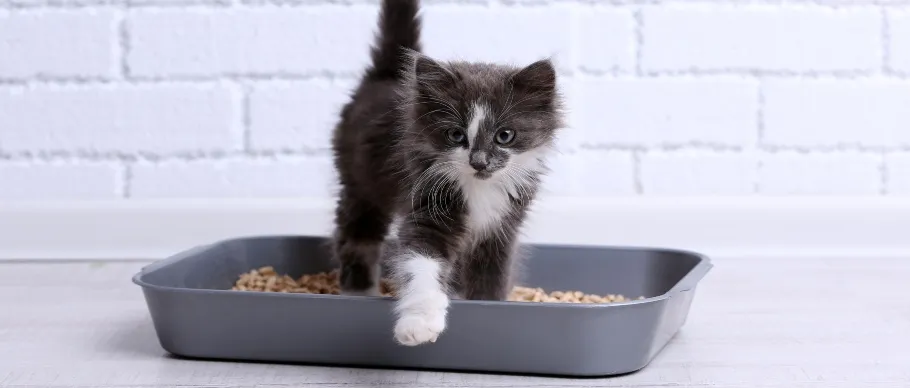One of the joys of cat ownership is their natural aptitude for litter box training. Unlike puppies, which often take weeks to grasp the concept, kittens quickly learn to use their litter box reliably, simplifying life for pet parents. While mother cats sometimes instinctively guide their offspring, many adopted kittens or adult cats require some guidance. Whether you’ve just adopted a kitten or brought home an older feline, proper litter training ensures a clean, stress-free home.
This guide covers everything from selecting the right supplies to troubleshooting common issues. Drawing from veterinary recommendations and real-world experience with countless cats, we’ll help you achieve success fast. Expect your cat to master the litter box within days, promoting better hygiene and preventing issues like urinary tract infections (UTIs).
Key Takeaways for Litter Box Success
Before diving in, note these essentials:
- Select a litter box sized for your cat’s breed, age, and weight—at least 1.5 times their body length.
- Stock up on litter box, clumping litter, cat pads, and a sifting scoop.
- Fill with 2 inches of litter to allow natural burying behavior.
- Place in a quiet, private spot away from food and water bowls.
- Praise successes and adjust location or litter type if needed.
Veterinarians from the American Veterinary Medical Association (AVMA) emphasize that a well-maintained litter box supports urinary health, reducing UTI risks by up to 50% in multi-cat homes.
Gather the Right Supplies First
Success starts with quality tools. Here’s what you’ll need:
- Litter box: Options range from open pans to covered designs or space-saving corner units. For privacy-loving breeds like Persians, hooded boxes work best; active breeds like Bengals prefer open ones.
- Cat litter: Clumping varieties dominate for their convenience—they form solid clumps when wet, making scooping easy. Non-clumping options suit sensitive paws but require full changes more often.
- Cat pads: Place under the box to catch overflows, especially useful for kittens learning boundaries.
- Litter scoop: A sifting model removes waste without dumping everything.
Size matters: A box too small cramps your cat’s digging instincts, leading to accidents. For a 10-pound adult cat, aim for 18-20 inches long. From personal experience fostering rescues, investing in durable, easy-clean materials like high-sided plastic prevents leaks and lasts years.
 Kitten leaving litter box
Kitten leaving litter box
4 Simple Steps to Litter Train Your Cat
Follow these proven steps, backed by cat behaviorists.
Step 1: Choose the Perfect Location
Cats crave privacy and dislike sharing elimination space with dining areas. Position the box in a low-traffic spot like a laundry room or bathroom corner, far from food, water, and noisy appliances. High-traffic zones overwhelm shy cats, causing avoidance. Test spots: If your cat hesitates, relocate after a week—many adapt better to elevated platforms in multi-pet homes.
Step 2: Prepare and Introduce the Litter
Pour 2-3 inches of litter into the box; this depth lets cats dig and cover waste instinctively, mimicking wild behaviors. Gently place your cat inside post-meal or nap—they’ll sniff and paw around. No forcing: Kittens may take 5-10 minutes. For strays or ferals, unscented litter eases the transition, as strong fragrances repel.
Step 3: Build the Habit with Consistency
Repeat placements 4-6 times daily, prioritizing after eating (kittens go within 15-30 minutes). Interrupt outdoor accidents gently—pick up and move to the box without scolding, as fear hinders learning. Reward with praise, treats, or pets immediately after use. Track patterns: Most cats go 3-5 times daily, aligning routines boosts retention.
Step 4: Troubleshoot and Adjust
No progress after a week? Switch litters (try crystal or pine for allergies) or spots. Medical checks rule out UTIs or constipation—consult a vet if accidents persist. In my experience with a rescue tabby, moving the box near a window view turned rebels into regulars overnight.
Daily and Weekly Cleaning Routine
Scoop waste 1-2 times daily to maintain freshness; top off litter as needed. Weekly deep cleans prevent bacterial buildup: Dump all litter, wash with mild soap (no harsh chemicals), dry thoroughly, and refill. This slashes odor and UTI odds, per Cornell Feline Health Center studies. Use gloves and dispose in sealed bags for hygiene.
Pro tip: In humid climates like Vietnam’s, enzyme cleaners neutralize ammonia smells effectively.
Final Tips for a Purr-fect Litter Habit
Consistency transforms litter training into second nature. Learn your cat’s schedule—post-meals, wake-ups—and preempt needs. With patience, even challenging cases succeed, fostering a harmonious home.
Consult your vet for personalized advice, especially for seniors or health-compromised cats. Ready for more? Explore our cat care tips for thriving felines.
References
- American Veterinary Medical Association (AVMA): Litter Box Guidelines
- Cornell University College of Veterinary Medicine: Feline UTI Prevention
- ASPCA: Litter Training Cats
